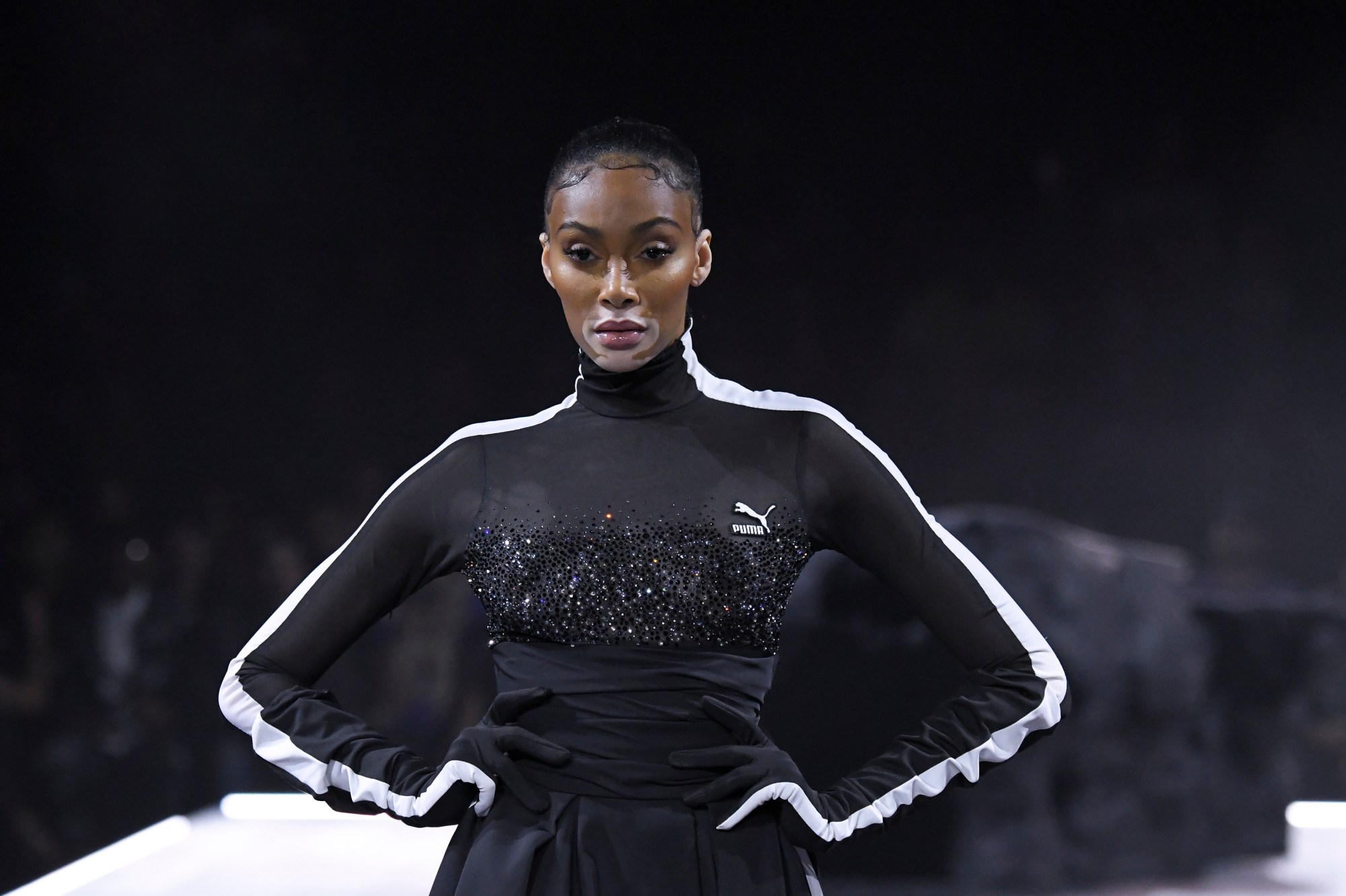Over a span of almost three decades, June Ambrose has helped shape contemporary street culture imagery like few others. A pioneer in the visual language of hip-hop, the designer and creative director has championed a meaningful cultural dialogue between fashion, sportswear and music.
Growing up in the Bronx, NY, June has long understood the language of fashion, a powerful tool to assert herself in the world. By the 90s, she was using her mastery of visual storytelling to collaborate with artists then still on the fringes of mainstream culture, helping propel them onto the world’s stage. Her understanding of the music scene and her creative vision naturally led her to music videos, then in full expansion with MTV. She raised the discipline to the rank of art while dressing the biggest names in the industry, for whom she imagined looks that have since become nothing short of legendary. From Missy Elliott’s black monochrome blow up suit in “The Rain” to Puffy or Jay-Z trusting her with their image, June’s style shaped the creation of these industry icons.
More than 200 videos later, these close connections are more relevant than ever. In 2020, she was appointed Creative Director of Women’s Basketball at Puma. Bringing her singular vision to the iconic German brand, this month she presented her first Puma runway collection, and a co-branded capsule, Keeping Score. After the show, we caught up about her vision for Puma and finding communion between music, street style and the fashion industry.
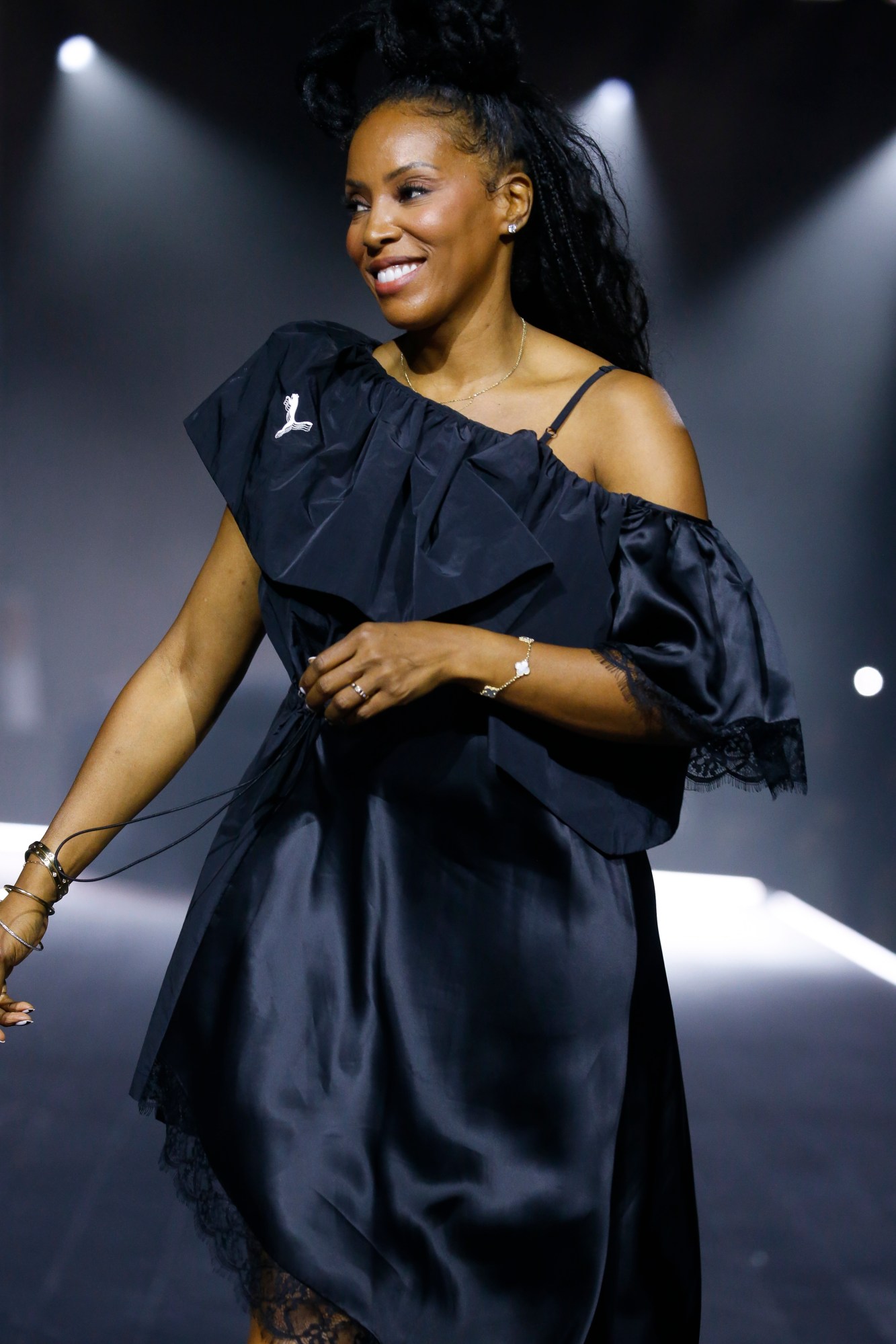
You just unveiled your first co-branded collection with Puma, Keeping Score, in which you explore the global empowerment of women in today’s society. How did the concept of the collection come about and what was the starting point?
The foundation of it all came from the heritage of Puma and its DNA as a brand. This runway show is such an important moving-forward moment for us. We wanted to celebrate Puma’s evolution in the space and the contribution of the brand in pop culture. We also wanted to be more vocal about it by giving it a stage as a way of speaking to more elevated customers. We are looking at the basics, the foundations of what the brand is built on, and then reimagining luxury pieces – just tapping into that climate of merging street sportswear and high fashion. I really wanted to speak about what elevated street high fashion in the luxury space means to me.
Throughout your career you’ve built on this deep connection between hip-hop cultures on one hand and the fashion industry on the other. It’s fair to say that youth culture and the streets are essential to both. Can you describe for us what “beyond bodega” means in this collection?
It’s beyond place and race, it’s about style, expression, community and creative freedom. It’s not where you’re from, it’s who you are that takes you beyond stereotypes and assumptions. I remember being a young girl growing up in the Bronx, an urban neighbourhood, and dreaming. I’ve seen communities like the one I grew up in all over the world and I want to show other kids that they have access to a way out. We celebrate them in the show because what they have contributed to the culture is unmatched. We have to give them back their work. They know who they are – they’re designers, they’re personalities – they have unique style and attitude, and we wanted that reflected in the show. It was important that I tap into the authentic intelligence of Puma and my own story to continue that conversation.
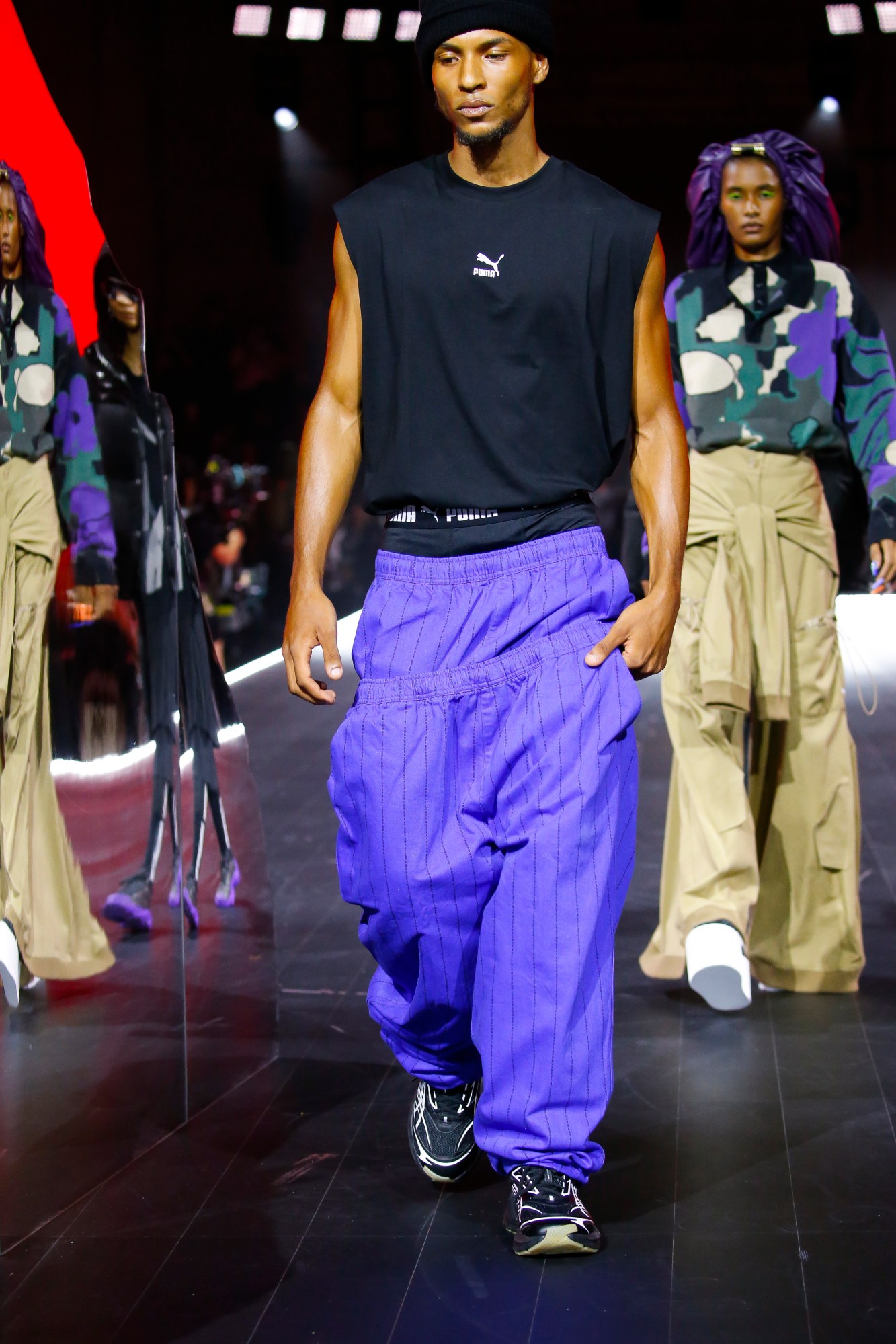
Throughout your career you’ve been working within different fields, Throughout your career you’ve been working within different fields, navigating between genres and mediums. How does your creative approach differ when you’re working on a collection, a music video, or an ad campaign?
Character development. I really tried not to address gender in design. I didn’t want to deal with it because I just felt like I wanted to capture the essence of a person’s true self, and we no longer can identify that in the terms women or men. So I also wanted to liberate that conversation. During fittings, the talents would say “Thank you for seeing me”. It was just emotional. When I’m working with celebrities, I’m able to have human experiences. That’s when you get the truth. If you felt like you wanted to be in a music video, or you wanted to experience a music video in real life, this show should make you feel like that. I wanted it to be authentic, not a designer simulating what that looks like. I want the show to look like the reality of the street and those authentic personalities are happening right in front of you. I just thought that in developing every character that I found cool and then I found a certain commerciality to it, that’s how I find the customer, you know?
How do you feel you have integrated your own identity and Puma’s brand values into the collection?
I think it’s just tapping into street culture. I always approached and celebrated urban music like global high fashion and the way I imagined sportswear to be. I take the same approach here, there’s no reason why you can’t take a 130 dollar tracksuit and think about it like you think about luxury. We treasure our favourite sweats, we wear them with our blazers, with our heels. We treasure our sneakers, we wear them with gowns and chiffon. Sportswear has really been elevated tremendously, and the conversation has evolved. I think it’s absolutely my job to normalise it publicly, to normalise eccentric self-expression – it’s what style is. It’s about how you deliver it.
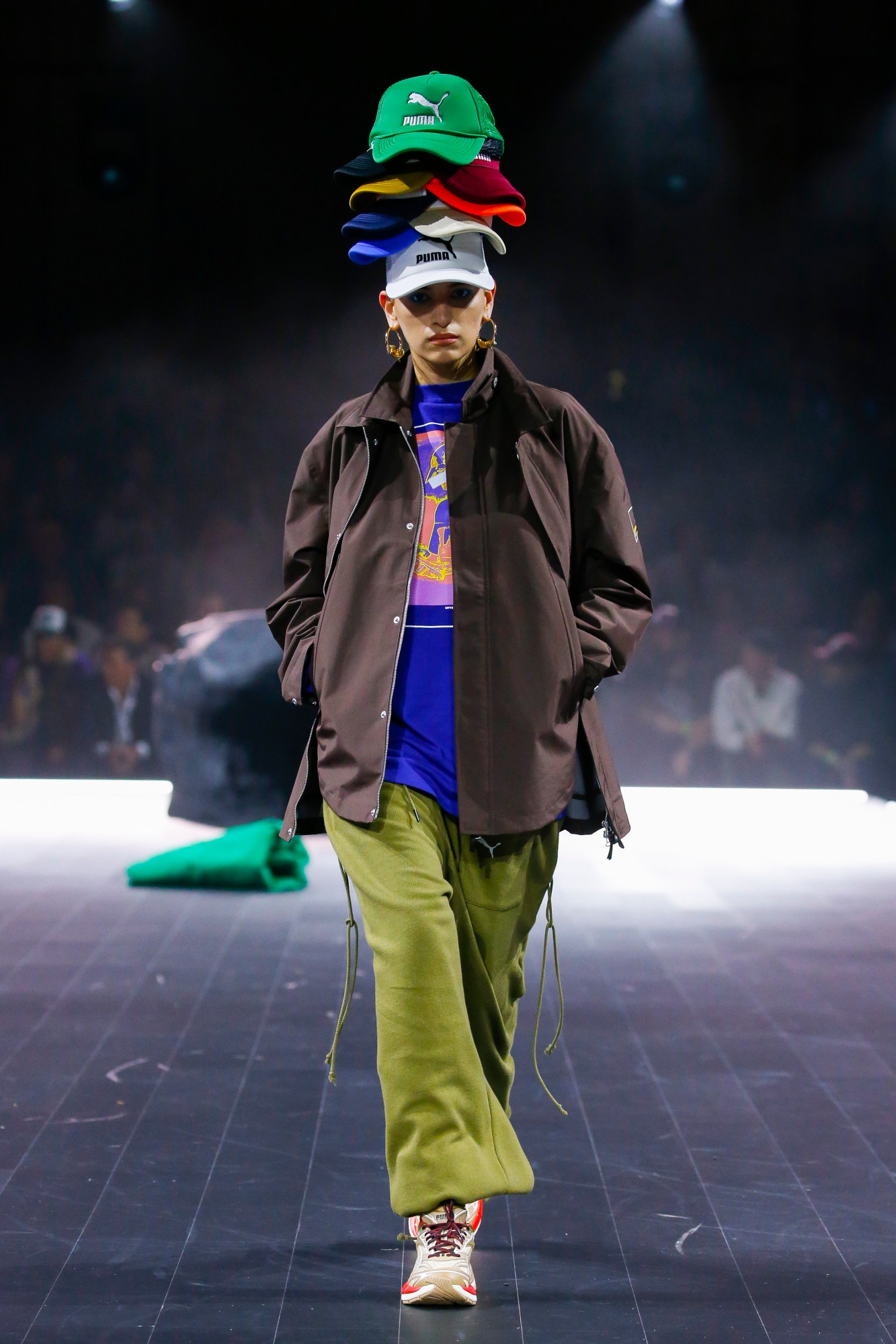
Can you discuss female representation in sportswear? Do you feel that sports and leisure wear is still predominantly dominated by male voices?
In 2020, we launched the Women’s Basketball division with talents that were previously unseen and unheard and under-served. We could become one voice by onboarding like-minded people to even the playing field, people who have the same ideology, and are champions to each other. That’s what I was seeking out. We have a long road ahead of us and I think that we definitely went some way to achieving that within the show, with some really strong iconic women, and strong iconic allies.
What are some of your favourite pieces in the collection Keeping Score?
Well, my collection is like my baby, but being able to design runway pieces for a commercial collection is really fun. I created storytelling around it. I think that there are no small moments, there are only big opportunities. In the Keeping Score collection, I celebrated someone who I thought was super iconic and really inspires me everyday. I wanted to thank her for having the courage and the audacity to do something so bold, and fearless. For me, with this collection, the runway becomes the sidewalk.


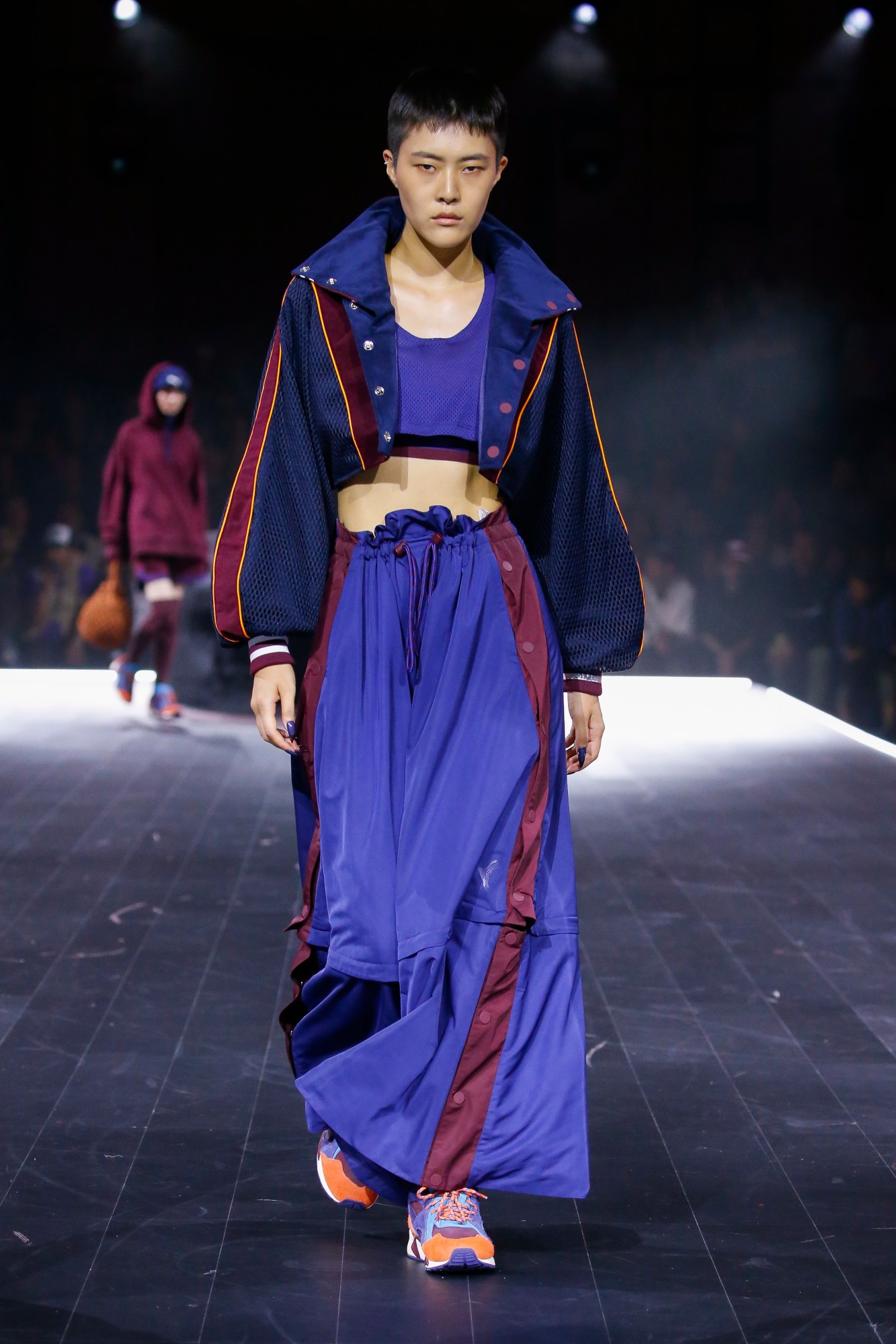

Credits
Images courtesy of PUMA
